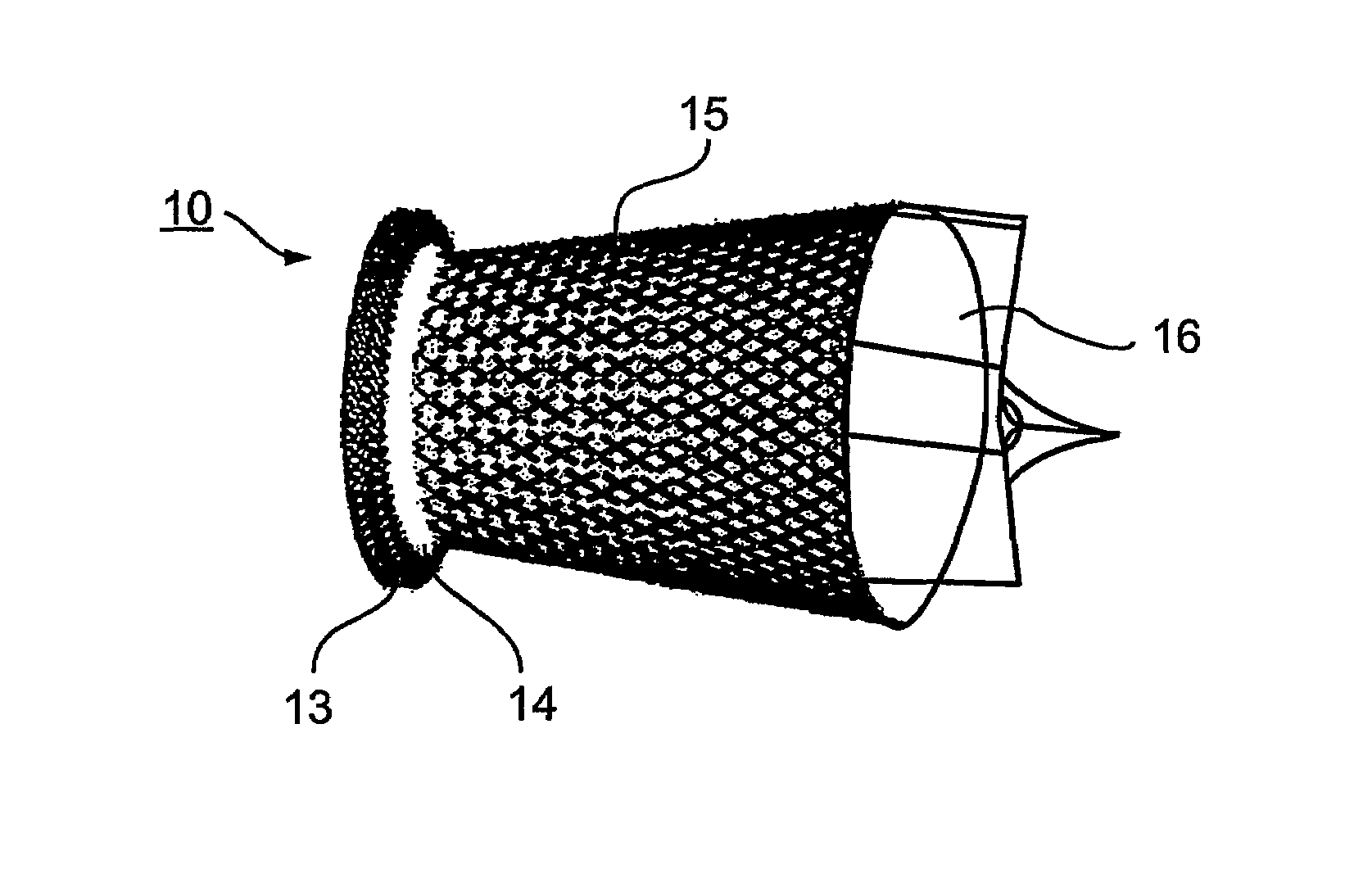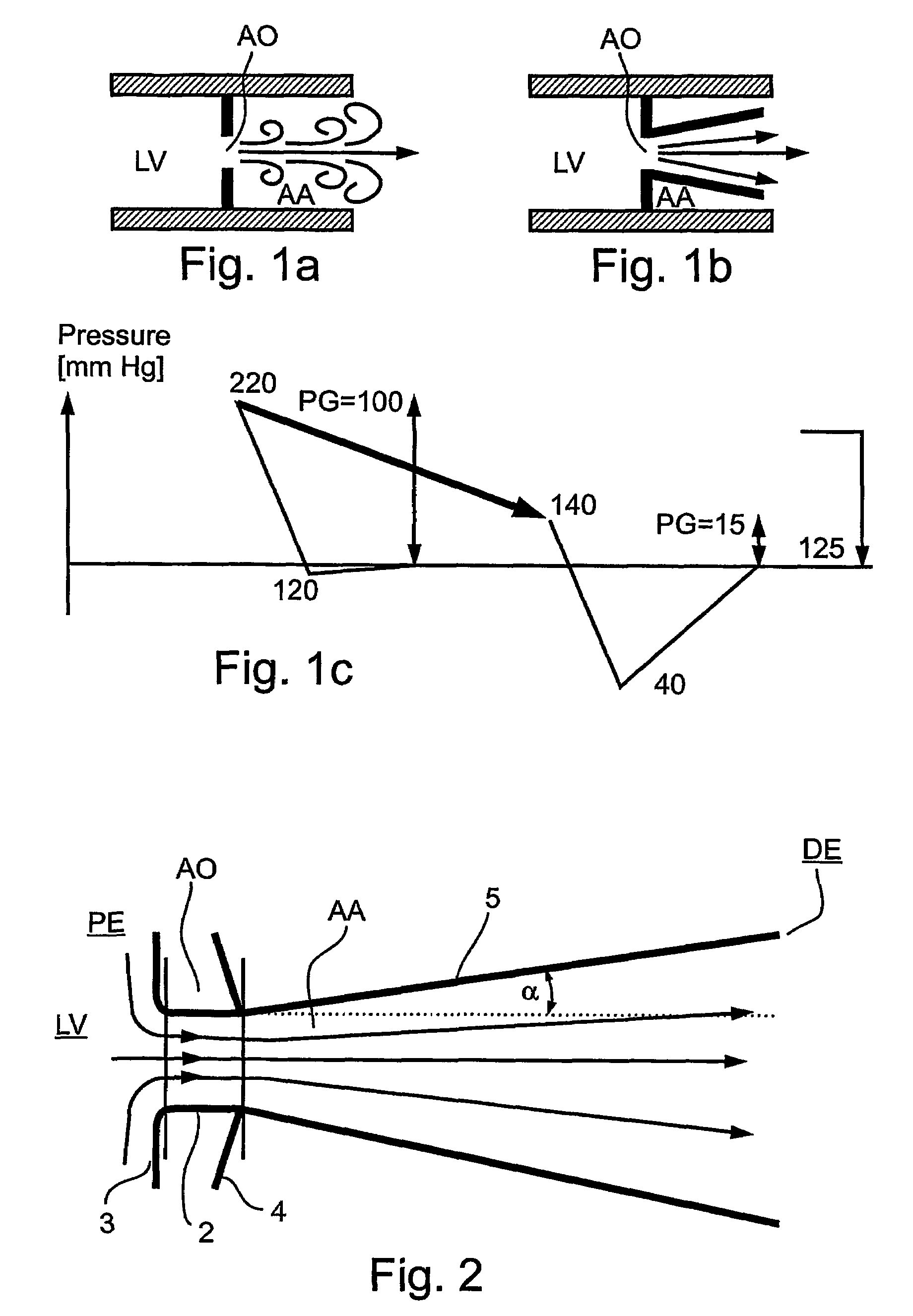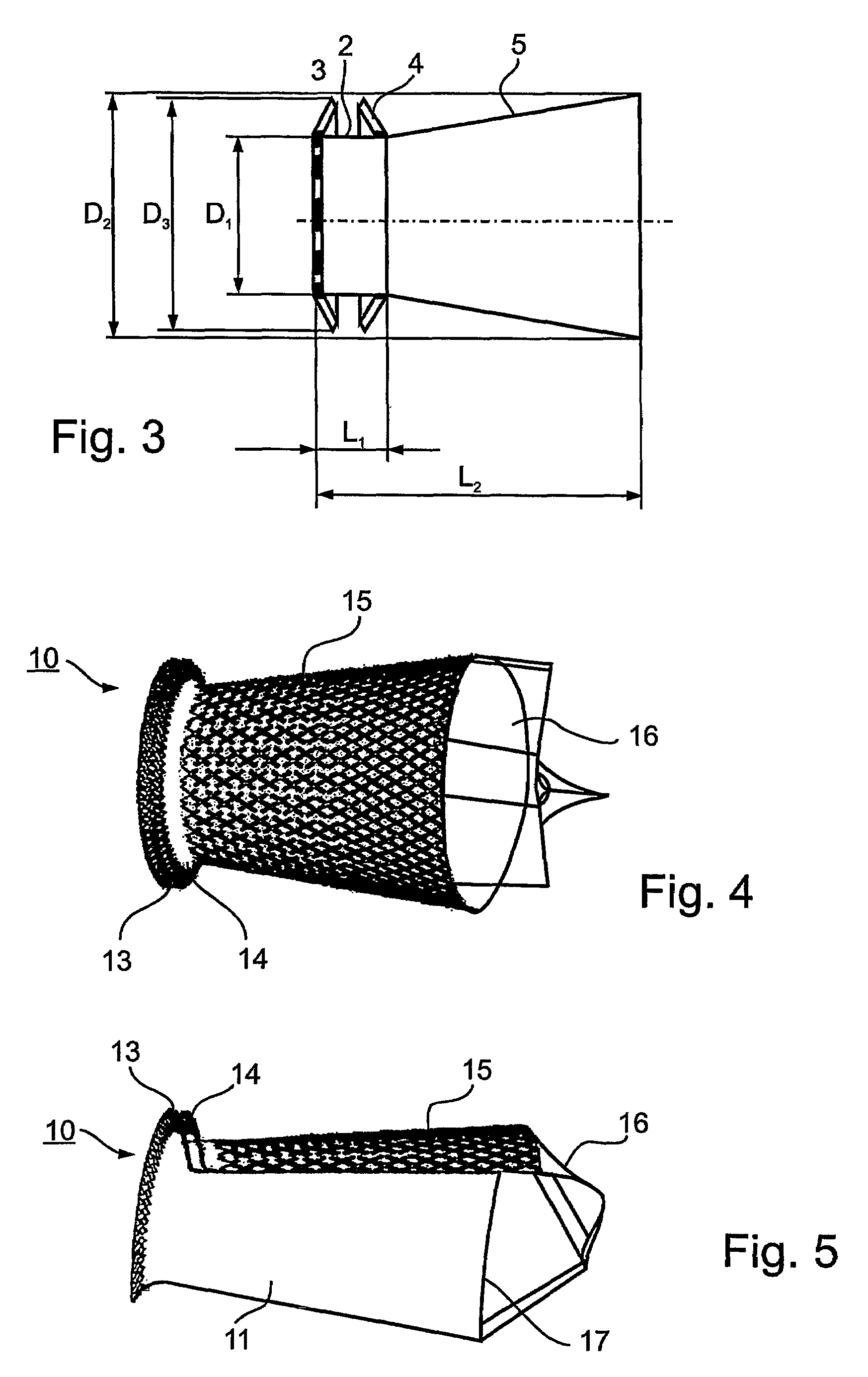Aortic prosthetic devices
a prosthetic device and aortic valve technology, applied in the field of implantable prosthetic devices, can solve the problems of increased wall tension and myocardial oxygen demand, increased intraventricular pressure, and significant pressure drop across the valve, and achieve the effect of increasing the risk of obstructing or occluding
- Summary
- Abstract
- Description
- Claims
- Application Information
AI Technical Summary
Benefits of technology
Problems solved by technology
Method used
Image
Examples
Embodiment Construction
Basic Concepts Involved (FIGS. 1-3)
[0039]As noted above, the present invention is primarily directed to implanting a prosthetic device into a diseased aortic valve for use in the treatment of aortic stenosis. This device is designed to aid blood pressure recovery so as to decrease the pressure gradient between the left ventricle and the aorta, thus alleviating the work load placed on the heart. FIG. 2 diagrammatically illustrates one construction of prosthetic device in accordance with the present invention, and FIGS. 1a-1c diagrammatically illustrate the manner in which such a prosthetic device may be used for alleviating the work load placed on the heart by an aortic valve suffering from significant aortic stenosis.
[0040]The principles of flow regulation in the cardiovascular system are quite similar to those in pipeline systems. Aortic pressure and cardiac output are regulated by the baroreceptor-system with its stretch-receptors in the aorta and carotid artery. Any loss of press...
PUM
 Login to View More
Login to View More Abstract
Description
Claims
Application Information
 Login to View More
Login to View More - R&D
- Intellectual Property
- Life Sciences
- Materials
- Tech Scout
- Unparalleled Data Quality
- Higher Quality Content
- 60% Fewer Hallucinations
Browse by: Latest US Patents, China's latest patents, Technical Efficacy Thesaurus, Application Domain, Technology Topic, Popular Technical Reports.
© 2025 PatSnap. All rights reserved.Legal|Privacy policy|Modern Slavery Act Transparency Statement|Sitemap|About US| Contact US: help@patsnap.com



